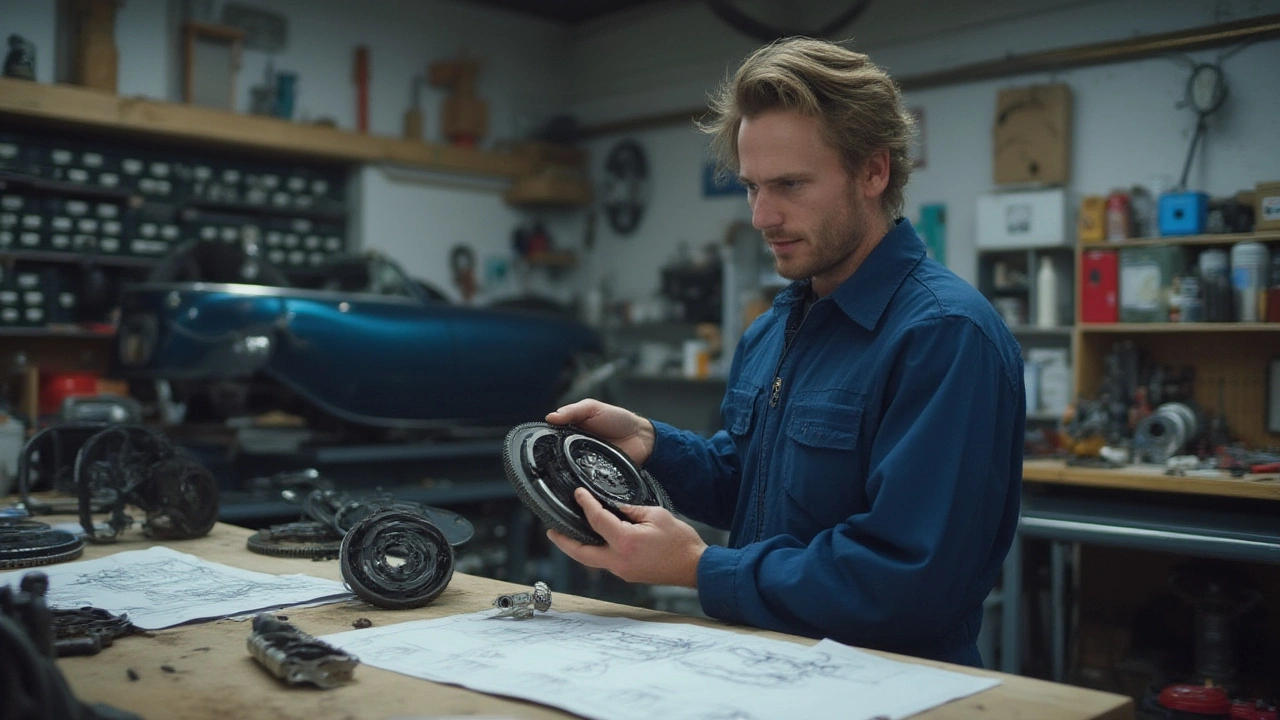
Does a New Clutch Increase Horsepower? Facts, Myths, and Real Results
Discover if a new clutch really adds horsepower or just unleashes what your engine already has. Full breakdown of facts, myths & advice for upgrades.
When your car starts slipping, shuddering, or refusing to engage gears, it’s usually not the transmission—it’s the new clutch, a critical component that connects your engine to the gearbox and transfers power smoothly. Also known as a clutch assembly, this part wears out over time, especially if you drive in stop-and-go traffic or haul heavy loads. A failing clutch doesn’t just make driving annoying—it can leave you stranded.
Most drivers don’t realize how much a clutch kit, a complete set of parts including the disc, pressure plate, and release bearing. Also known as a clutch replacement set, it’s what you actually buy when replacing the clutch affects performance. A worn clutch disc means power doesn’t transfer efficiently, which hurts acceleration and fuel economy. The pressure plate holds the disc tight against the flywheel—if it’s weak, the clutch slips under load. And if the release bearing is noisy or stiff, shifting becomes rough or impossible. These aren’t separate problems—they’re parts of one system. If you’re replacing one, you usually need them all.
How long does a new clutch last? In the UK, it’s typically 60,000 to 100,000 miles, but aggressive driving, riding the clutch pedal, or towing can cut that in half. Signs you need a replacement include a spongy or high clutch pedal, grinding when shifting, the engine revving without acceleration, or a burning smell from the clutch disc overheating. You don’t need a mechanic to spot these—just pay attention while driving. If your car hesitates when you pull away from a stop, or the RPMs spike without speed gain, it’s not the engine—it’s the clutch.
Not all clutches are made the same. A stage 1 clutch, a performance upgrade designed for mildly tuned cars that still drives like a stock one. Also known as a upgraded clutch, it handles more torque than stock is perfect if you’ve added a chip tune or exhaust upgrade. But if you’re just commuting, a standard OEM-style clutch is cheaper and smoother. Buying the wrong type can make your daily drive uncomfortable—or worse, cause premature failure.
When you’re shopping for a new clutch, check the vehicle fitment carefully. A clutch that works for a Ford Focus won’t fit a VW Golf, even if they’re the same year. Always match the part number to your VIN or check with a reputable supplier. Auction sites like Ultimate Car Auction Hub often carry genuine and aftermarket clutch kits at prices you won’t find at dealerships. You’ll find everything from budget-friendly replacements to heavy-duty kits for modified cars—all without the markup.
Replacing a clutch isn’t a weekend job for beginners. It takes hours, special tools, and lifting the car safely. But knowing what’s inside the kit helps you verify the parts you’re getting. A full clutch kit includes the disc (the friction surface), pressure plate (the spring-loaded clamp), release bearing (the part that pushes the diaphragm), and sometimes a pilot bearing or alignment tool. Skip the cheap ones that leave out the bearing—they’ll fail fast.
Don’t wait until your clutch dies completely. If you’re noticing any of the symptoms—slipping, grinding, or strange smells—it’s time to act. The longer you wait, the more stress you put on the flywheel, and that’s an expensive extra repair. A new clutch is a big job, but it’s one of the most important maintenance decisions you’ll make. Whether you’re replacing it yourself or buying parts from an auction, understanding what you’re getting makes all the difference.
Below, you’ll find real guides from drivers who’ve been there—how to spot clutch failure before it strands you, what’s actually in a clutch kit, and how to choose the right one without getting ripped off.

Discover if a new clutch really adds horsepower or just unleashes what your engine already has. Full breakdown of facts, myths & advice for upgrades.